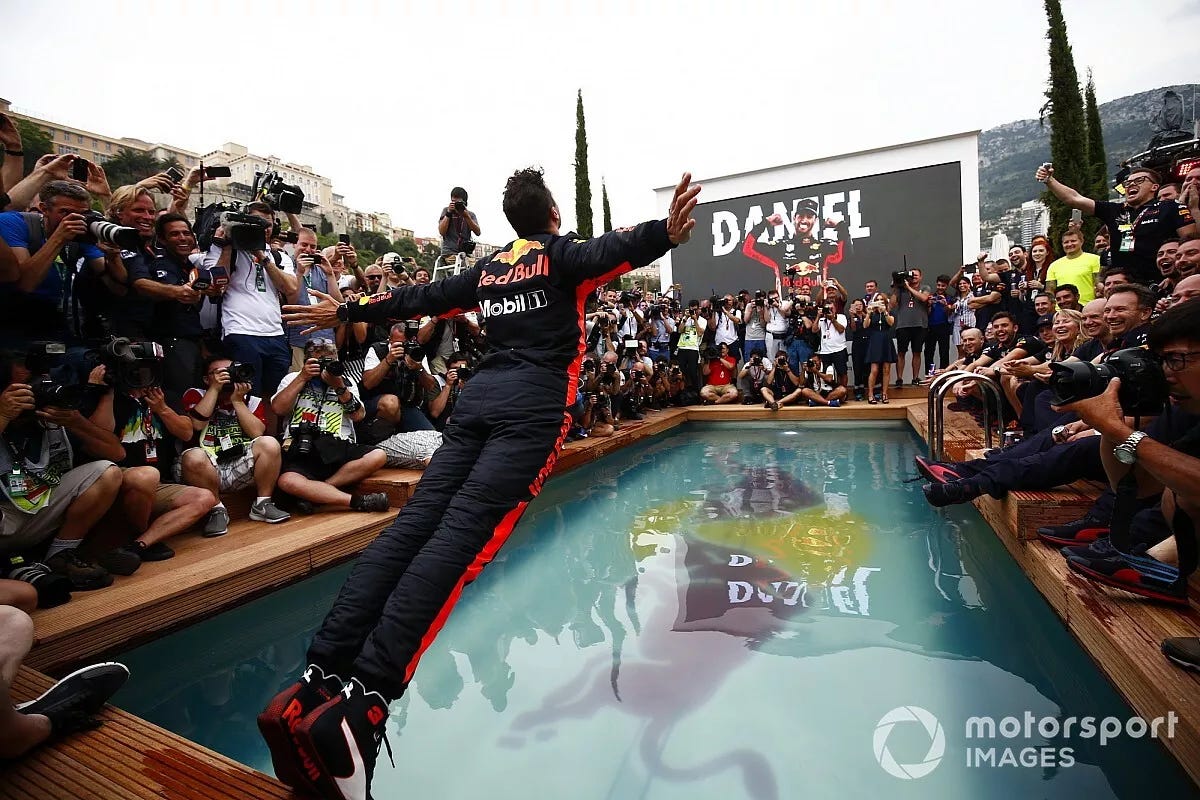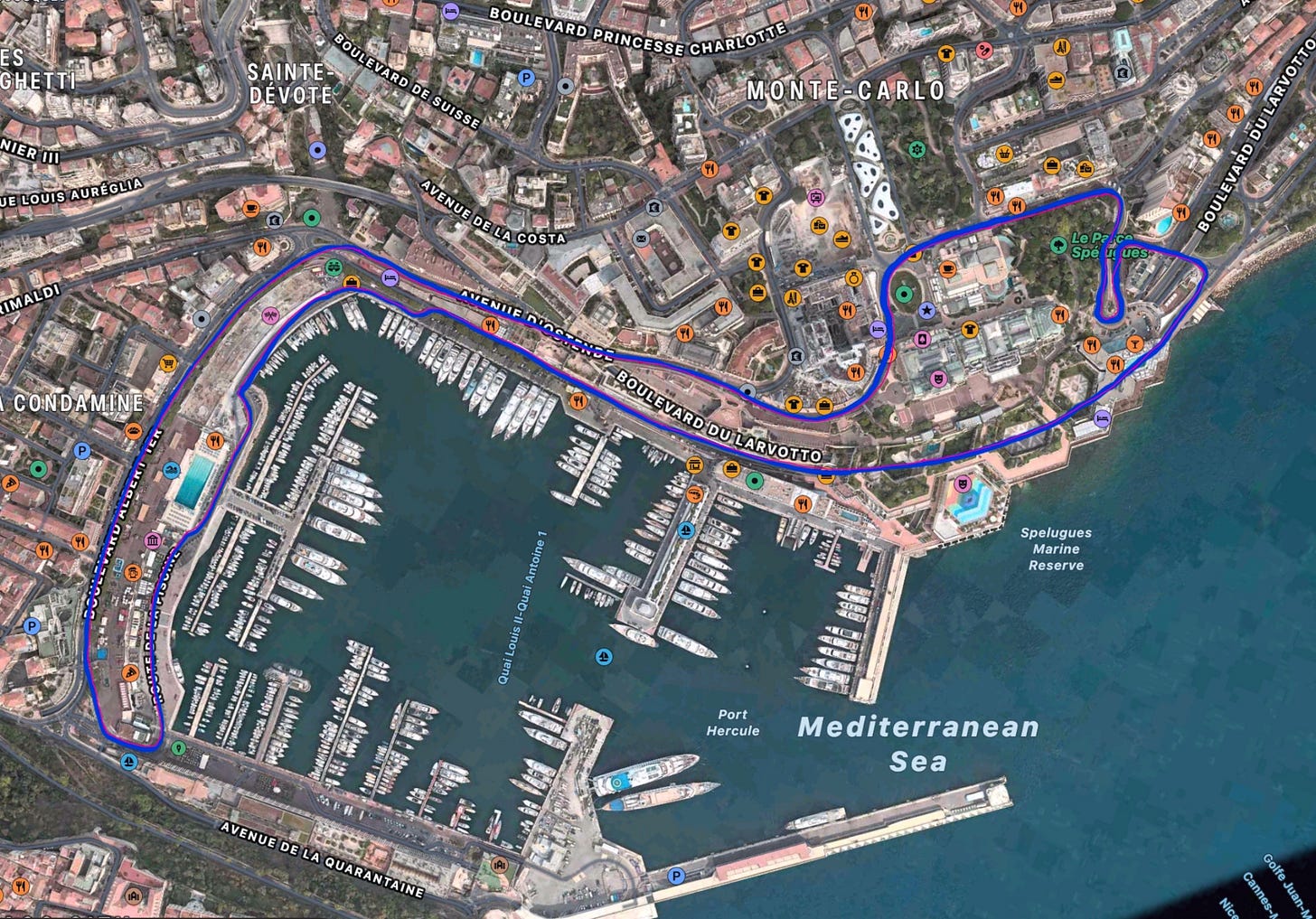The Formula 1 calendar is a curious entity. In recent years, it has expanded at a remarkable pace, culminating in this year's longest-ever season featuring 23 scheduled races. As a devoted F1 fan, I have often viewed races through the lens of excitement or disappointment based on the track. I love Spa and don’t really care for Qatar’s circuit. I love Suzuka (who doesn’t), and notably, and perhaps controversially, I loathe the Monaco F1 circuit.
Monaco is a perennial favorite among F1 fans, with many fans, members of the press, F1 YouTubers, and drivers making a yearly display of proclaiming their adoration for the track. Drivers often speak highly of Monaco's qualifying challenges and the risks involved in achieving a perfect lap. However, they also acknowledge that Monaco isn't the best racing venue due to its limited overtaking opportunities. Every single year we hear the drivers robotically give lip service to this fact, as evidenced by these cherry-picked quotes:
"We’ve had the same format for years. It is the best venue. It is the most beautiful place that we get to race at. But you already know that it’s never exciting for the fans.
“It’s a one-stop race with these hard, long stints that we get to do. On the list of difficult places to overtake, it is off the scale; highly unlikely you’re ever going to get an opportunity to do so.
“I don’t think fans enjoy that. I don’t know what the solution is, but I’m hoping when we are looking forward to future generations, it can be a more exciting race for people.” - Lewis Hamilton, Monaco 2021, from Race Fans
“There’s no room for error in Monaco, and with just seven corners and no real straight, overtaking is almost impossible. That’s why it’s vital to qualify well.” - Sebastian Vettel, Monaco 2019, from Automobile Sport
“I think it has to be in the calendar. And I don’t see any reason why it should not be in the calendar. Because overtaking is difficult, it is difficult; it is difficult also in Singapore. It has been difficult in Barcelona; it has been difficult in Budapest.” - Fernando Alonso, Monaco, 2022, from F1 Chronicle
“While I’ve always loved qualifying at Monaco, the races have been a bit of a pain because it’s very difficult to overtake, so everything depends on strategy, and you have to maintain full concentration all the way to the end. Even when you think nothing will change, someone can make a mistake in the closing stages, and there could be an opportunity, so you have to be ready to take it.” - Pierre Gasly, Monaco, 2018, from Formula1.com
Despite producing some unforgettable races, such as Daniel Riccardo's 2018 victory and Lewis Hamilton's win following Niki Lauda's passing in 2019, the circuit frequently resembles a multimillion-dollar parade rather than a race. In fact, it is worth noting that those two incredible races might only have been possible because of the tight, impassable nature of the Monte Carlo circuit.

During the pandemic, I began to question why we don't eliminate lackluster tracks like Monaco. There are plenty of impressive circuits worldwide eager for F1's attention and investment, such as Kyalami in South Africa, which hasn't hosted an F1 race since 1993, or much beloved Sepang and Hockenheim. Even less beloved tracks like Baku have consistently provided thrilling races. So why is Monaco considered the "crown jewel" of the Formula One calendar? It seems absurd.
Seeking answers, I contacted Peter Windsor, a respected journalist and former F1 team and sponsorship manager. Windsor's thoughtful response emphasized the importance of striving for the perfect lap and the challenges each circuit poses. He went on to say,
“As an afterthought, I'd also say - again in my opinion - that defense is an integral part of attack, and that the drives of Lando [Norris], Antonio [Gionvinazzi] and Pierre [Gasly] were massively enhanced by the pressure they had to withstand.” - Peter Windsor
This exchange led me to view the F1 calendar as akin to a decathlon, with each circuit offering unique challenges for both cars and drivers. This perspective made events like Monaco more palatable, transforming them from mere ostentatious displays into integral components of the championship season. Mind you, I’ve been a fan for more than a minute and only recently came to view the calendar this way.
Each F1 circuit, with its varying combinations of fast and slow corners, corner radii, and elevation and camber changes, creates a gauntlet designed to reveal greatness. As the calendar continues to grow, endurance and commitment are increasingly emphasized as essential traits of a true champion.
So while I still won’t be stoked at the end of June and the beginning of July when we get Monaco and the Spanish Gp - another track famous for processional races - I now take a more expansive view of these events. These are the places where championship runs are built, or as we saw in Spain in 2016, an unraveling as well as the emergence of a new talent. In F1, you just never know when things are going to get wild, and this is why, love the track or hate it, we watch every race. In F1, unpredictability still reigns supreme.





